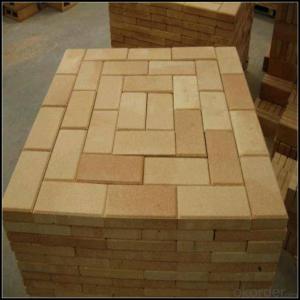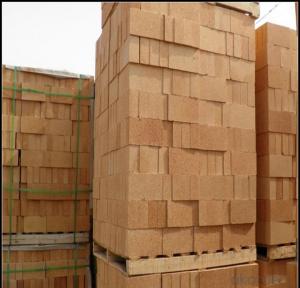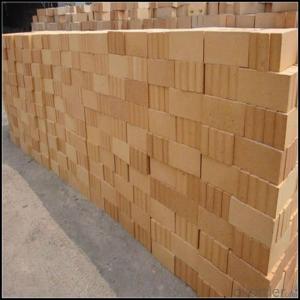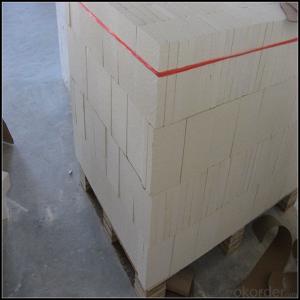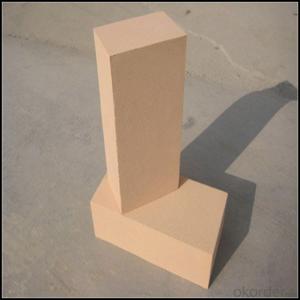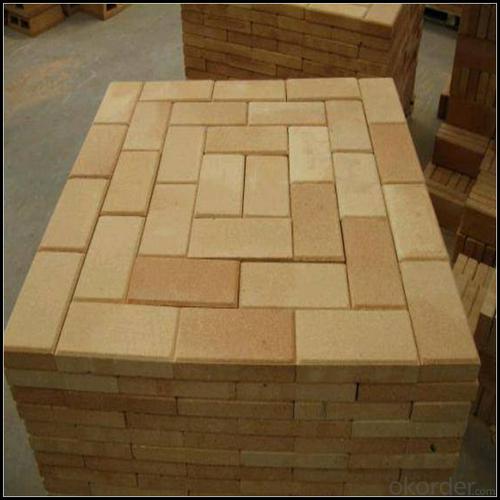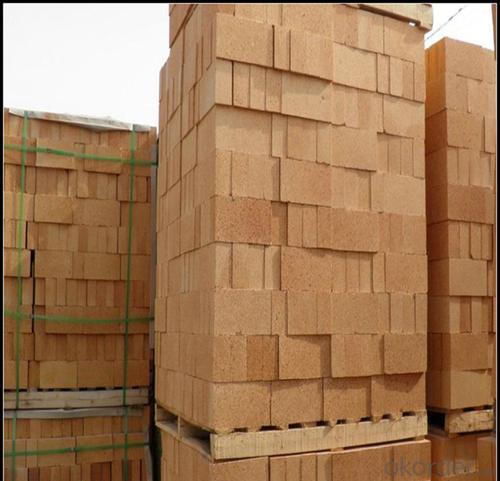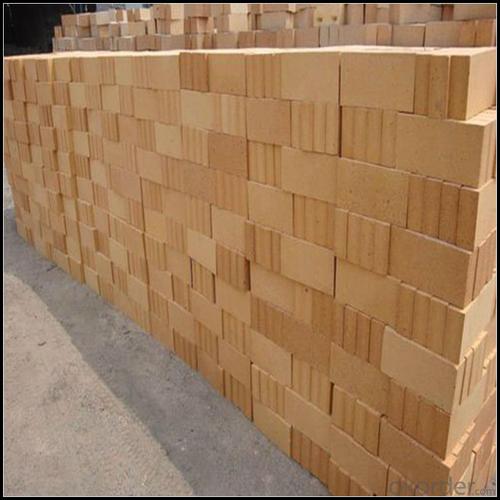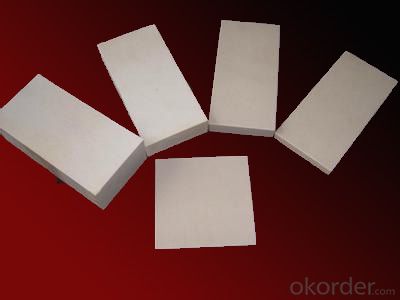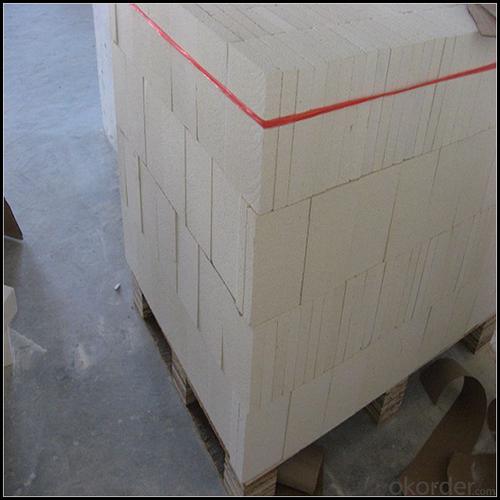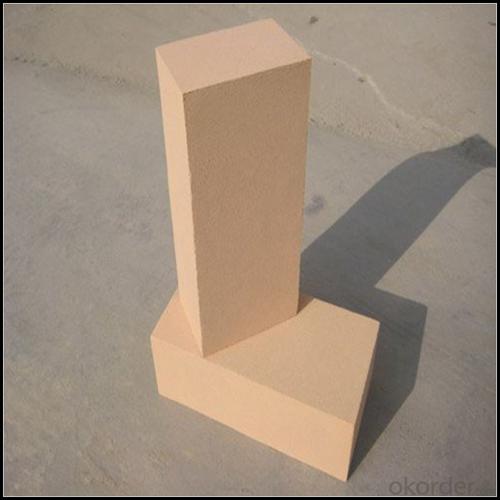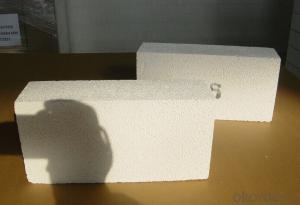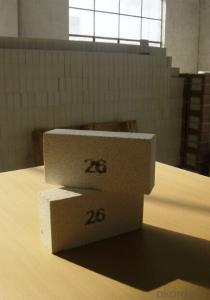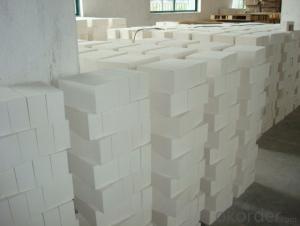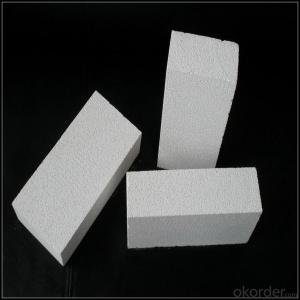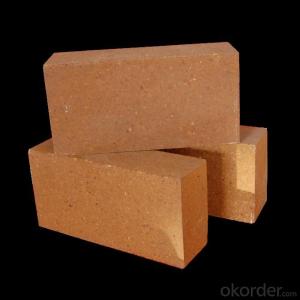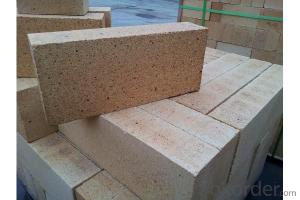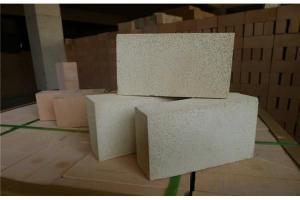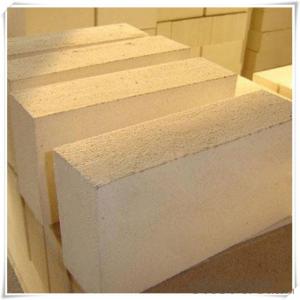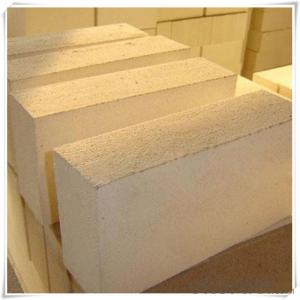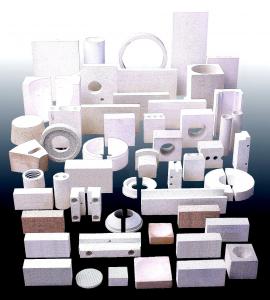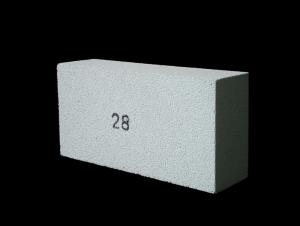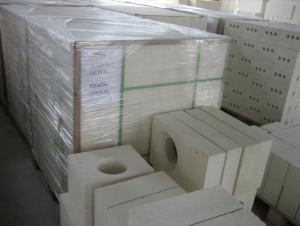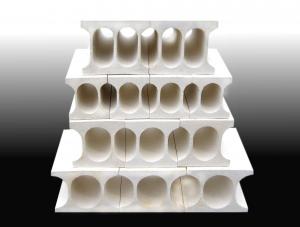Insulating Fire Brick for Cement Kilns
- Loading Port:
- China main port
- Payment Terms:
- TT OR LC
- Min Order Qty:
- 2 m.t
- Supply Capability:
- 600 m.t/month
OKorder Service Pledge
OKorder Financial Service
You Might Also Like
Refractory Brick
CMAX firebricks are classified under temperature between 1300℃ to 1700℃, manufactured from high purity alumina clay by mixing, press-forming, drying, sintering and machining. Bricks contain carefully-graded organic fillers which are burned out during sintering to give a uniform controllable pore structure. This technique makes product feature low thermal conductivity and excellent heat insulation
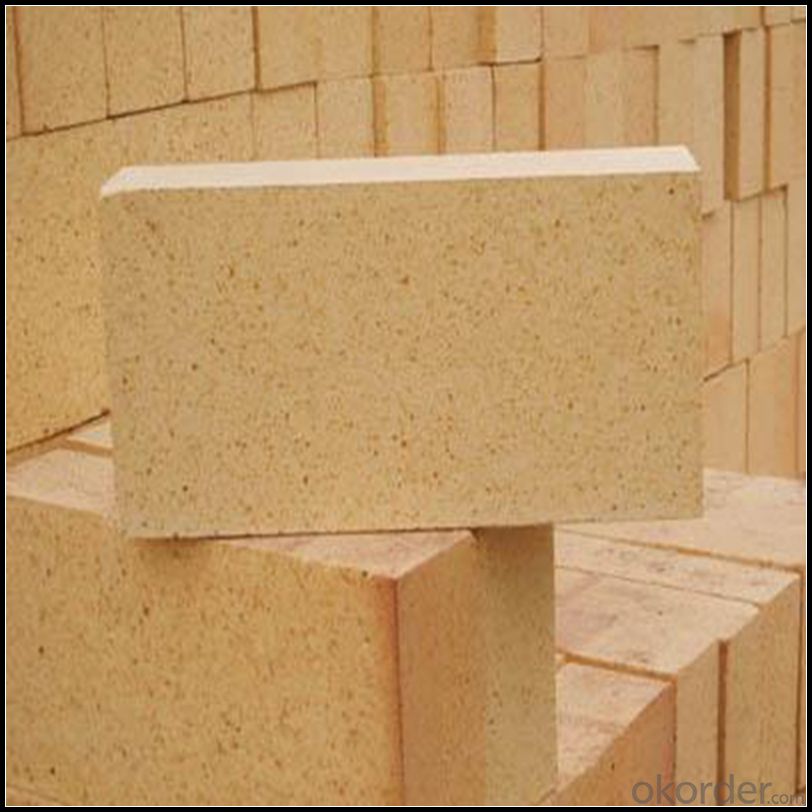
Features
a) Low thermal conductivity;
b) High refractoriness;
c) High mechanical strength;
d) Excellent thermal shock resistance;
e) Non standard sizes and shapes are available upon request.
High Alumina Brick
1. High refractoriness.
2. Good spalling resistance and wear resistance.
3. Good corrosion resistance.
4. Good thermal shock resistance.
5. High mechanical strength.
6. High-temperature creep rate is low.
7. Good volume stability at high temperature.
Application
1.Carbon bake furnaces in the aluminum industry
2.Preheat zones and cyclones of rotary cement kilns
3.insulation for glass tanks
4.Coke ovens
5.Blast furnaces
6.Reheating furnaces
7.Suspended roofs
8.Lime kilns
9.Chimney
10.BBQ/Pizza Ovens
Data Sheet
Classification Temperature (℉/℃) | 3000/1650 |
Bulk Density (g/cm3 ) | ≤1.0 |
Thermal Conductivity | |
800℃, W/m.K | ≤0.39 |
1000℃, W/m.K | ≤0.43 |
1200℃, W/m.K | ≤0.48 |
Reheating Linear Change (%) | 1550℃×12h |
≤0.9 | |
Chemical Composition (%) | |
Al2O3 | ≥75 |
Fe2O3 | ≤0.5 |
Packaging & Shipping
Packaging Details:Be packed in fumigated wooden pallets
Delivery Detail: 30 days after order

Our Services
Optimum solution and product supply of refractories for high temperature industries, such as iron steel, non-ferrous, petrochemical and building materials.
Engineering design, contract and consult for refractories, and civil architecture design.
Research, development, manufacture and sale of superhard materials.
R&D, manufacture and sale of special packing materials for export.
Inspection, supervision and arbitration of refractories.
Consultation and services in refractories information.
Training and cultivation of high-level talents in refractories profession
Sales Network

Company Information
CNBM (China National Building Material) Group is the largest comprehensive building materials group in China that in integrate scientific research, manufacturing and logistics into one entity. The largest building materials and equipment specialists in China. Upon State Council approval, today CNBM owned more than 300 subordinate manufacturing factories and servicing companies. There are 6 fully owned public listed companies and 11 partially owned with substantial shares public listed companies. In many of these fields, CNBM is playing the leading role in the building industry in the country.
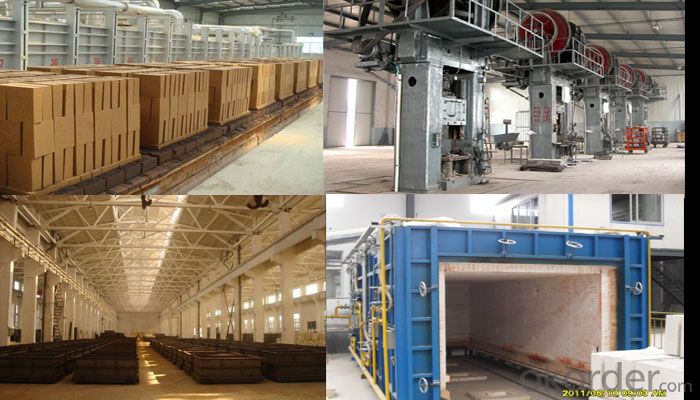
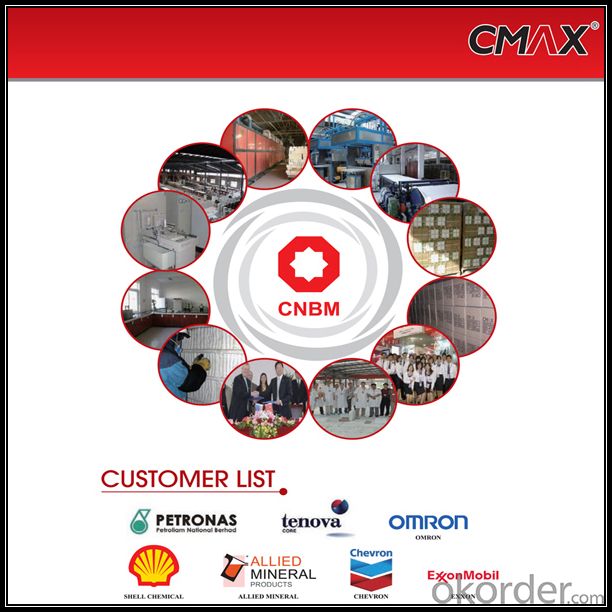
FAQ
1. Which products do you have?
We have all kinds of refractory brick, castable, mortar, cement, ceramic fiber products, etc.
Or you could browse our products to choose what you need.
2. Can you give me a brief introduction of the application of your products?
We are mainly specializing in the refractory materials in iron and steel, cement, glass, ceramics, petrochemical, electric power Industry, etc.
3. If I need your offer, what information do you need?
In order to choose suitable products, it will be appreciated to provide us the information, such us specification, technical data, order quantity, products application etc. If any question, please contact us freely.
- Q: Can insulating fire bricks be used in chimney construction?
- Indeed, insulating fire bricks have the capability to be utilized in the construction of chimneys. These bricks are specifically designed to possess a low thermal conductivity, which ultimately leads to their effectiveness in minimizing heat transfer. As a result, they prove themselves suitable for chimney construction as they aid in maintaining cooler chimney walls and preventing excessive heat from being transmitted to the surrounding structures. Moreover, apart from their lightweight nature, insulating fire bricks possess commendable insulation properties, thereby making their handling and installation in chimney construction a much simpler task. However, it is imperative to acknowledge that in order to comply with safety regulations and ensure proper chimney construction, it is crucial to utilize insulating fire bricks in conjunction with other fire-resistant materials.
- Q: Are insulating fire bricks resistant to carbon monoxide attack?
- Insulating fire bricks have a general resistance to carbon monoxide attack. They are made from materials that can withstand high temperatures and chemical corrosion, including carbon monoxide. These bricks are commonly used in environments where high temperatures and exposure to gases like carbon monoxide are frequent, such as furnaces, kilns, and fireplaces. The composition of the bricks allows them to endure long periods of exposure to carbon monoxide without deteriorating or reacting with the gas. However, it is important to remember that continuous exposure to extremely high levels of carbon monoxide can eventually harm any material, including insulating fire bricks. Therefore, it is still crucial to ensure proper ventilation and safety precautions when dealing with carbon monoxide in any situation.
- Q: Can insulating fire bricks be used in high-temperature insulation for aerospace applications?
- Yes, insulating fire bricks can be used in high-temperature insulation for aerospace applications. Insulating fire bricks are made from lightweight refractory materials that have high insulating properties and can withstand extreme temperatures. These bricks have low thermal conductivity, which allows them to effectively reduce heat transfer and maintain the desired temperature inside aerospace components. Aerospace applications often involve high-temperature environments, such as in rocket engines, exhaust systems, and thermal protection systems. Insulating fire bricks can be used in these applications to provide thermal insulation, protecting sensitive components from excessive heat and preventing heat loss to the surroundings. Additionally, insulating fire bricks are known for their excellent resistance to thermal shock, meaning they can withstand rapid temperature changes without cracking or degrading. This property is crucial in aerospace applications where components are subjected to extreme temperature variations during launch, re-entry, or other operational phases. Moreover, insulating fire bricks have lightweight properties, which can be advantageous in aerospace applications where weight reduction is critical for fuel efficiency and overall performance. By using insulating fire bricks, aerospace engineers can achieve effective thermal insulation while minimizing the added weight to the system. Overall, insulating fire bricks offer a viable solution for high-temperature insulation in aerospace applications. Their high insulating properties, resistance to thermal shock, and lightweight nature make them suitable for protecting critical aerospace components in extreme temperature environments.
- Q: Can insulating fire bricks be used in the construction of smelting ovens?
- Yes, insulating fire bricks can be used in the construction of smelting ovens. Insulating fire bricks are designed to have low thermal conductivity, which means they are excellent at retaining heat. This property makes them ideal for applications where high temperatures need to be maintained, such as smelting ovens. Smelting ovens are used to melt and refine various metals and minerals. These processes involve extremely high temperatures, and it is crucial to minimize heat loss to ensure efficient and effective smelting. Insulating fire bricks can help achieve this goal by providing excellent insulation and reducing heat loss. Insulating fire bricks are made from lightweight materials, such as ceramic fibers or expanded clay, which have high insulating properties. They are capable of withstanding temperatures up to 3000°F (1650°C), making them suitable for the extreme heat generated in smelting ovens. Additionally, insulating fire bricks are resistant to thermal shock, meaning they can withstand rapid temperature changes without cracking or breaking. This is essential in smelting processes, which often involve heating and cooling cycles. Furthermore, insulating fire bricks are easy to work with and can be cut or shaped to fit specific dimensions or designs. This flexibility makes them highly adaptable for constructing smelting ovens of various shapes and sizes. In summary, insulating fire bricks are an excellent choice for the construction of smelting ovens due to their low thermal conductivity, high temperature resistance, thermal shock resistance, and ease of customization. They can help maintain high temperatures, reduce heat loss, and ensure efficient smelting processes.
- Q: Are insulating fire bricks suitable for use in glass melting furnaces?
- Yes, insulating fire bricks are suitable for use in glass melting furnaces. Insulating fire bricks have high thermal resistance and low thermal conductivity, making them ideal for retaining heat and preventing heat loss in the furnace. Additionally, their lightweight and porous nature allow for efficient energy utilization and reduced fuel consumption.
- Q: Are insulating fire bricks resistant to oil and gas?
- Insulating fire bricks are generally resistant to oil and gas. These bricks are made from high temperature materials such as alumina and silica, which provide excellent thermal insulation properties and can withstand high temperatures. They are commonly used in industries where there is exposure to heat, such as in furnaces, kilns, and fireplaces. However, it is important to note that the resistance to oil and gas can vary depending on the specific composition and manufacturing process of the insulating fire bricks. Some bricks may have a higher resistance to oil and gas compared to others. To ensure the best resistance to oil and gas, it is recommended to use insulating fire bricks that are specifically designed for such applications. These bricks are often referred to as oil and gas resistant fire bricks and are manufactured with additional additives or coatings that enhance their resistance to these substances. In summary, while insulating fire bricks are generally resistant to oil and gas, it is advisable to use bricks that are specifically designed for such applications to ensure optimal performance and longevity.
- Q: How do insulating fire bricks affect heating or cooling times?
- Insulating fire bricks help to reduce heating or cooling times by providing excellent thermal insulation. They have low thermal conductivity, which means they minimize heat transfer between the hot or cold surface and the surrounding environment. As a result, insulating fire bricks can effectively retain heat or coldness, allowing for faster heating or cooling of the desired area.
- Q: Can insulating fire bricks be used in cement plants?
- Certainly, cement plants can utilize insulating fire bricks. These bricks are specifically engineered to endure extreme temperatures and are widely employed in thermal insulation-demanding industries. Within cement plants, they can find diverse applications, including kiln lining, furnace lining, and other equipment operating at high temperatures. These bricks effectively decrease heat dissipation, enhance energy efficiency, and maintain stable and regulated temperatures during cement production. Furthermore, insulating fire bricks possess a lightweight nature and exhibit low thermal conductivity, rendering them an optimal selection for insulation purposes within cement plants.
- Q: What material is good for indoor thermal insulation?
- Own home, if the south, hot summer and cold winter zone, with inorganic insulation mortar or polystyrene particles insulation mortar, the effect is very good;
- Q: Can insulating fire bricks be used in the construction of steam generators?
- Yes, insulating fire bricks can be used in the construction of steam generators. These bricks are designed to withstand high temperatures and provide insulation, making them suitable for applications such as steam generators where heat retention is important.
Send your message to us
Insulating Fire Brick for Cement Kilns
- Loading Port:
- China main port
- Payment Terms:
- TT OR LC
- Min Order Qty:
- 2 m.t
- Supply Capability:
- 600 m.t/month
OKorder Service Pledge
OKorder Financial Service
Similar products
Hot products
Hot Searches
Related keywords
